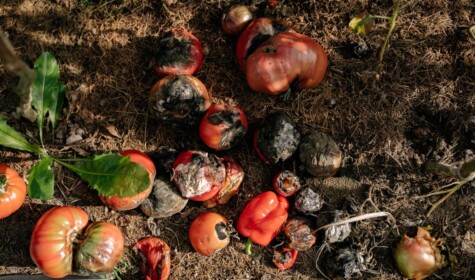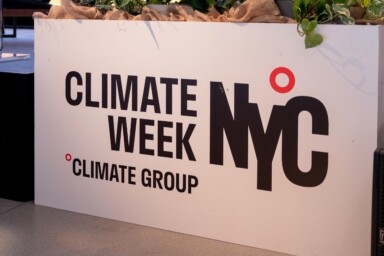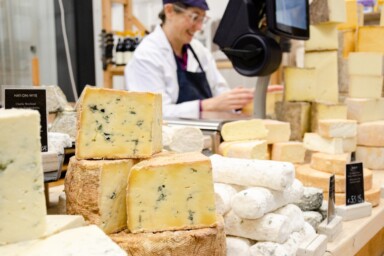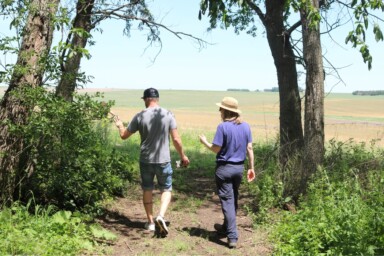Food waste in the UK and across the globe is a continuing issue and one that must be addressed more completely as we move forward into this new century. Food waste, in its broadest manifestation, encompasses everything that is lost in the process of food production, from the food in the field and on the land, to what is lost in harvest and in the packhouse, then moving off the land and into its transport and to its markets, until it is bought and then not eaten. The global statistic for food waste (as a whole) is around 30%, almost a third of our food.
What is most overlooked in this process is farm loss and waste. This takes many forms dependent on farm size and what their operation is. Suffice it to say, however, that most farmers don’t know the scale of their loss and waste, and that can have a big impact. It’s estimated that 3.3 million tonnes is lost or wasted on farms every year, releasing 10% of overall agricultural emissions and contributing a quarter of food loss and waste overall. The irony of all this, is that farmers don’t seem to really understand what’s at stake for them – the significant financial value that they may be losing.
Getting on top of farm waste
Ben Hartman’s book The Lean Farm gives thoughtful consideration to why waste happens on farms, and it is truly myriad. He details 10 kinds of on-farm waste, from overproduction – which he identifies as ‘the most odious’ because these unsold goods waste both investment and product – to waste that comes from transport, overprocessing, inventory, waiting and motion and all the way to ‘overburdening’ and ‘unused talent’ which both reflect on the waste of good labour. The expansive way that Hartman tackles waste on the farm is holistic; he recognises the interrelatedness of different kinds of waste and this helps him to see a bigger picture. Having an understanding of how waste is generated within a farm’s system, is critical to curbing it.
Measuring farm waste can help farmers become more aware of how much they are wasting. The World Wildlife Fund, UK has recently published its ‘roadmap’ to reducing farm waste, across the spectrum of UK farms. It aims to make a sea change in the number of farmers working to reduce their food loss and waste on farm, which will ultimately both reduce emissions and increase profitability. The WWF maps an inverted table of farm waste, which starts with ‘prevention’ at the top – the ideal starting point for eliminating waste – and moving through ‘reuse’, ‘recycl[ing]’ and ‘recovery’ (in relation to energy) to end with ‘disposal’, the worst outcome for farm waste. Ideally, waste should work through this pyramid, moving as much as possible into surplus and as little as possible into disposal. If we can reorient thinking around minimising waste to increase profitability and sustainability, we will make significant progress in reducing our waste issue overall.
The Sustainable Food Trust in its work with the Global Farm Metric, has contributed some of the thinking around how to involve farmers more deeply in managing farm loss, waste and surplus. The Global Farm Metric defines on-farm sustainability and enables farmers to measure their whole-farm impacts in a consistent way, with categories including soil, water, productivity and resources. It is designed to align existing assessments through a common framework for sustainability. This establishes a baseline of farm-level data that can be used to monitor progress towards sustainability goals at a local, national and international scale.
Waste is also, arguably, aided by scale. It’s easier to manage waste if you are small than if you are big, but that doesn’t necessarily mean that you waste less – waste is not always proportional to size and scale. Whatever the size of your farm, having a plan or set of protocols to identify and manage waste and loss is vital. And the thing to always remember here, is that minimising waste will always, ultimately, help support a farm’s bottom line.
As an example – what works and what doesn’t?
My husband and I run a small organic mixed farm that is mainly focused on horticulture. We have a box scheme that fluctuates in size throughout the year (in summer, many of our customers have produce from their gardens and drop out for three or four months), but we also do a weekly market year-round which is at its height over the summer holidays, so it balances out pretty well. And we’ve set up a system through the week that works well for us. Our market is on a Monday, so we pick on the Sunday, and when market finishes, anything that isn’t sold comes back and goes into our veg boxes on the Tuesday. Also on the Tuesday is the pick for Wednesday and Thursday boxes and by Friday, all the boxes for the week are out the door. Any food hanging about by the end of the week, comes into the house, and because we have both family and volunteers living with us, there very little left. So, that works great for us.
What doesn’t work as well is our cancellation policy – we currently allow our customers to cancel boxes with two-days notice and while, in principle, we should be able to take the customer off the list prior to picking and packing, our relay on this isn’t the best. This is because we are really busy on the farm and we have a small crew and are generally, overstretched. We’re not as efficient as perhaps we could be, and efficiency really requires focus. To remedy this, we’ve extended our cancellation policy to request a week’s notice on box cancellations. The problem here is that customers like to be able to cancel on quite short notice, so there’s been some resistance to the longer notice period. We’ve explained the logic of the shift and how it is focused on cutting our waste, but it’s not a perfect world. We’re hoping as time goes on a bit, they’ll settle in.
There is a lot that we do really well on the farm in terms of waste. We are religious about our composting as it’s such an important component of our fertility building, and we’re good with using our surplus – the pigs we raised for our own kitchen were fed on the grade-out potatoes and spent veg, which they loved. But, the next step is to have a much better grasp on where we are losing or wasting veg in our system and getting a better understanding of how to measure its impact and ultimately reduce it.






